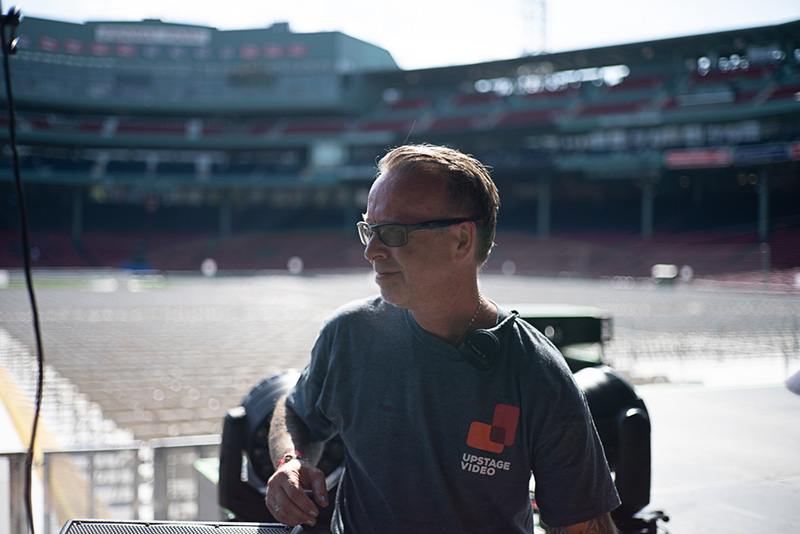
For this PLSN Interview, we were the proverbial fly on the wall as Upstage Video’s Doug Murray had a recent conversation with renowned video director Blue Leach. Upstage was there for Leach’s work on the current Pearl Jam Tour, and this is how that conversation rolled:
Doug Murray: Let’s start with a brief background on how you found your way into this side of the business.
Blue Leach: I started as a runner in a London film studios when I was 20. I spent eight months watching photographers do their thing until one day a music video production company came into one of the studios to shoot a promo. I attached myself to that production company and badgered them for a job until they offered me one as a runner. From there, I worked on lots of music videos and some commercials and worked up to being a production assistant and then live multi camera shoots. Then I became assistant director/associate producer.
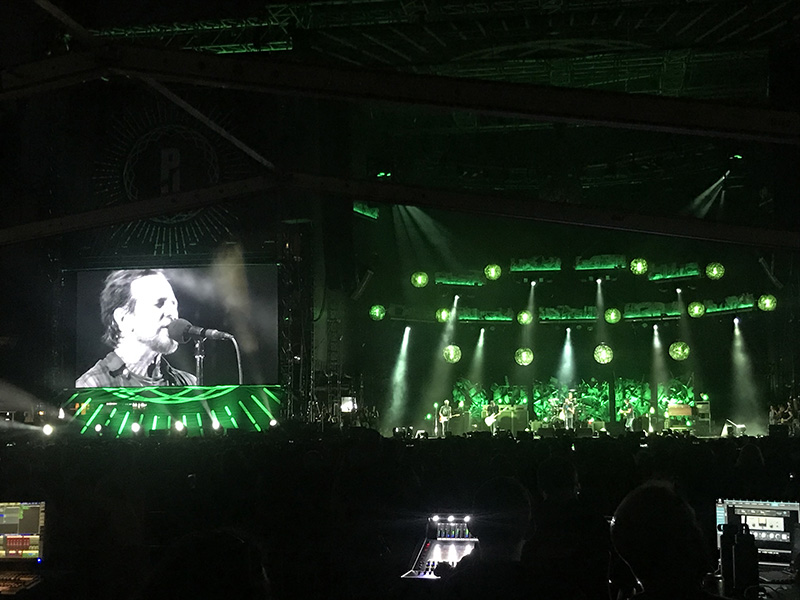
DM: What were some of the acts you worked with, and was there a big break?
BL: At that point I worked on shoots for acts like Chayanne, Scorpions, The Cure, and Paul McCartney. In 1993, I took the reins as director for Paul McCartney on his South America and Japan legs of that tour. After that, it was filming live gigs all the way. [This included] camera operating for Bryan Adams and Elton John. From 1995 onwards, I was directing multi-camera tours, including my first independent directing job, which was for Toto. Thereafter and over the years for Spice Girls, Cure, Bruce Springsteen, Nelson Mandela, Eric Clapton and Queens Of The Stone Age, to name but a few.
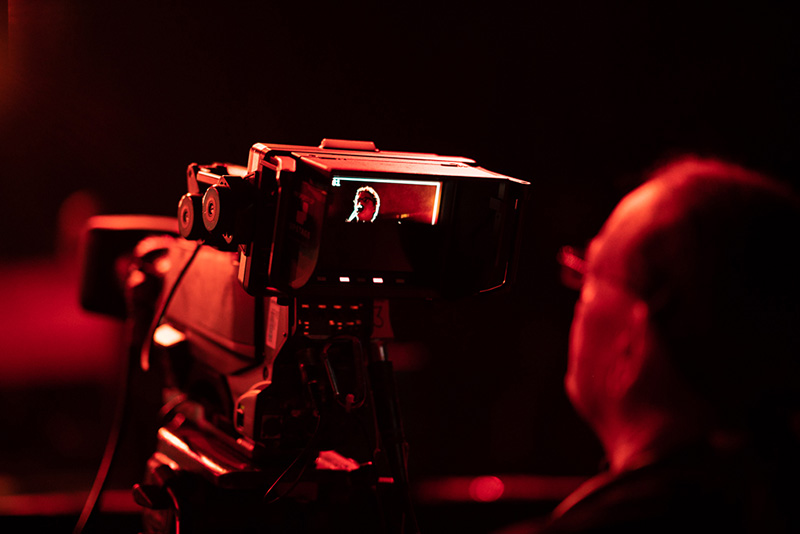
DM: Pearl Jam’s “lack of enthusiasm” for video is well-known. How did they finally get to the point where they said “yes” to the screens?
BL: I’d seen Pearl Jam live first at the Warfield in San Francisco, while I was out there prepping gear for that Paul McCartney tour. I was floored by that PJ show and had it in my mind that I wanted to one day work with them. I got to meet Eddy Vedder in 2008 through Michael Stipe while working on an REM tour. From that point, I just kept emailing anyone associated with PJ, trying to get in.
DM: And?
BL: Nothing. Then May 2013 rolls around, and I get an email from Liz Burns, PJ’s tour PM, asking my availability for a Wrigley Field show that July. Once I’d picked myself up off the floor, I replied to her email. In the process of saying yes to the PJ gig, I passed up an opportunity with someone else for year-long tour – just for the opportunity to work for Pearl Jam in the hope that they liked my work and saw the sense in having live cameras and screens.

DM: And that went well?
BL: It did, and I was offered to join them on the [2013/2014] Lightning Bolt tour, which was everything I thought and imagined it would be. Sublime. Best of the best crew and production and, of course, the band. Also, relatively recent to that point was the acceptance and embracing of moving lights.
DM: And how did all that fit together?
BL: [Lighting designer] Kille Knobel and I work together to produce the best feeling and look. It’s about projecting from the screens a passionate, sensitive, and the cinematic live cut, which everyone — myself, the band, the crowd — appreciates.
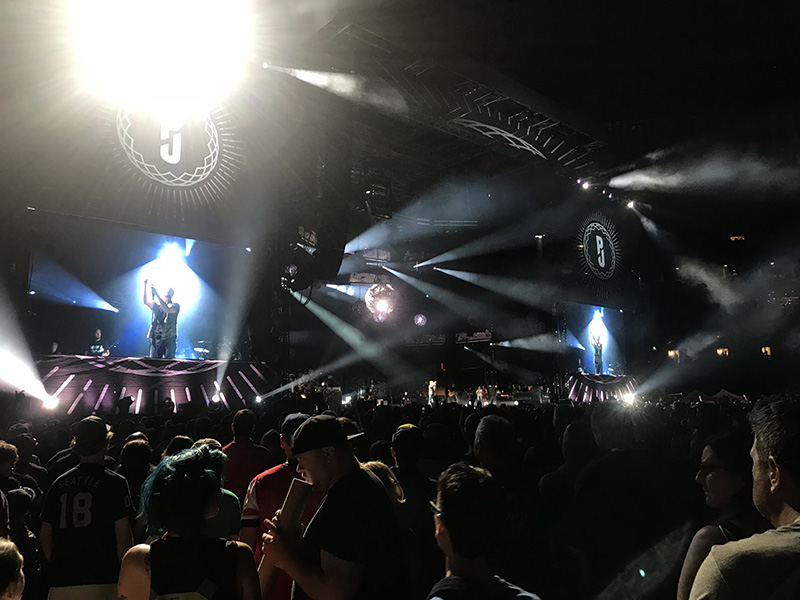
DM: Let’s talk about the current tour. On this run, you spent the summer in Europe doing festivals, and then wrapped things up over here with the “Home & Away” Shows. Were their any key differences in how you approached those festival dates vs. the U.S. stadium shows? Were the rigs similar? Crew lineup?
BL: The crew line-up never changes in terms of camera positions. I will perhaps add a couple more for stadiums going forward in time. The different photographers and engineers for U.S. and Europe though are carefully vetted to make sure I have the most creative and competent team around me. Standards must never drop wherever the band play whether it be festivals, stadiums, ball parks, or arenas. Projection in arenas and LED for any shows, which are outside. Moving cameras are a must — dollies, pedestals, fisheye mini-cams on sliders, cue balls on autopods, good lenses on the mains and impeccably shaded and balanced throughout.

DM: Brief us on your rig and why you spec’d it the way you did.
BL: PPU’s [Portable Production Units, a.k.a. flight packs] go backstage or up/onstage left for festivals and stadiums. I mix from FOH, as I always do, so that I can see the screens on the stage. It’s important that I feel the whole show, as that invariably makes a better show. Desk, preview monitoring and coms out front with me along with a box for power and signal. Upstage Video provided a fiber conduit from FOH desk back to video world where the shading and Robocams were controlled.
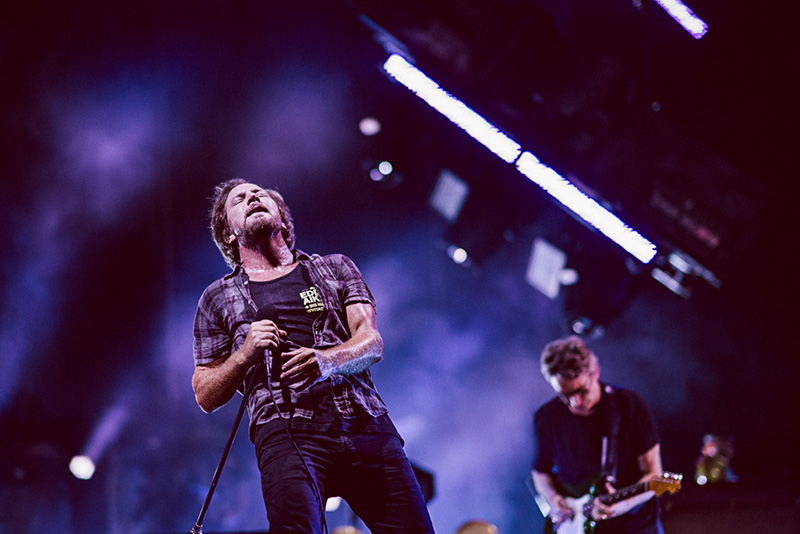
DM: Let’s talk about those “viewing parties” you did in Seattle and Boston. That seemed like it was a new task added to things you have to think about while cutting a show.
BL: Yes, we tried the “viewing parties,” first in Boston at House Of Blues in 2016, and it was successful. It was packed with members of their official fan club, “10,” and had the same feeling as a gig. Then 2018 rolled around, and they wanted to do the same at MoPOP [Museum of Pop Culture] in Seattle as part of the new PJ exhibition there, and then again in Boston. I keep in my head some thoughts on how to make sure it’s an entertaining cut for both I-Mag and for a more TV-style screen environment. It’s a straight transmission with no edits, so it’s a warts-and-all cut that retains the passion and energy of the live show cut for screens, full of feeling and fun. The events went off as a great success. Lots of fun to see how the show translates in a room the day after cutting it live.”

DM: And how was it, working with — ahem — the Upstage Video team?
BL: I went with Mark Haney at Upstage Video, because he shares the understanding and appreciation for live photography like this, that this is an art and that it needs commensurate talent and equipment with necessary backup if needed. My camera crew all deliver at the standard required for Pearl Jam and myself — if they didn’t they wouldn’t be there.
Engineer Greg Brown at Upstage Video is exemplary, as is Dan Scalzo, my DOP, who turns on those cameras and lenses with the help and input of Kille. Dave “Legs” Driscoll is my camera 2 on dolly in the pit. I’ve been working with him on and off since 1993. Joe Wolohan is one of the best hand held camera ops I’ve ever worked with. Kevin Shuss on the long lens has worked for Pearl Jam since the very earl days. Joe Finney [from Upstage Video] LED screen tech is new to my team and approached each day with an enormous smile and confidence and delivered great-looking screens, along with Jake Hogenson, who’s been with us for a couple of tours. Jake also operates my remote cameras.
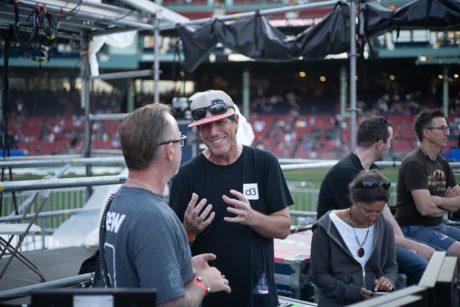
Turning the Mic Around
We turned the mic around and had a couple of questions for Doug Murray, president of Upstage Video, about his company and their choice of gear for this tour.
PLSN: Have you and Blue known each other for a while, or did you meet him through Mark Haney?
Doug Murray: This was totally a Haney hook up. Mark has been working with Blue and PJ (Pearl Jam) for a number of years.
PLSN: We see a couple of screens offstage for the I-Mag shots. Is Upstage Video a big proponent of using ROE Visual gear or was there a specific reason you chose the MC7 tiles?
DM: PJ did not specify a particular product. They deferred to us on which LED product to choose. We’ve always inventoried ROE products, and when someone is asking for a quick build, stadium I-Mag system, the MC7 is a pretty safe bet. It travels well, holds up nicely in the elements, but most importantly it delivers a gorgeous image. It also goes without saying, but okay, I’ll say it…putting a rig out with PJ is a big deal for us, and having ROE’s Burbank team at the ready was nice. There just aren’t many (any?) other manufacturers out there that have that sort of team ready to support a tour domestically, or internationally for that matter.
PLSN: How do those tiles react in a stadium when it rains?
DM: They work. Like butta.
PLSN: Where does all your touring gear come out of?
DM: This rig came out of our Lititz shop, and then the flight pack was prepped out of our Los Angeles shop.
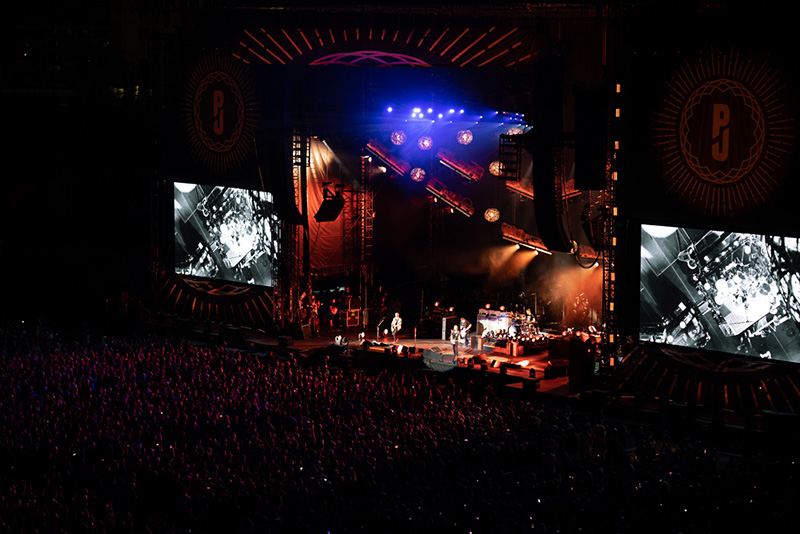
Pearl Jam LIVE (2018 Tour)
Video Gear (Supplied by Upstage Video)
- 2 ROE MC7 I-Mag Screens, 18’h x 32’w
- 2 Panasonic AWHE130 PTZ cameras
- 5 Marshall CV343 box cams with Fujinon fish-eye lenses
- 4 Sony HDC1500R Camera chains
- 1 Canon 86X DigiSuper HD Box lens
- 1 Panasonic AV-HS6000 switcher
- 6 Video Devices Pix-270i record Decks
- 1 Blackmagic Design 40×40 Router
- 1 Blackmagic Design HyperDeck Studio Record Unit
- 1 Various dollies and sliders for motion shots


